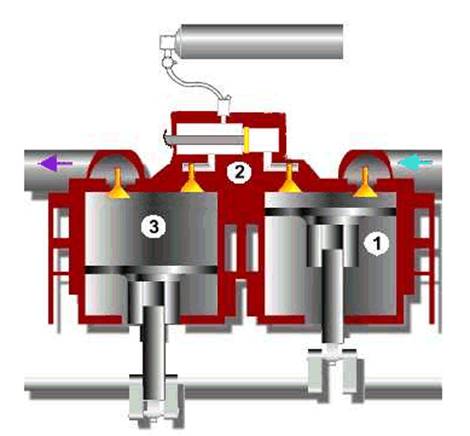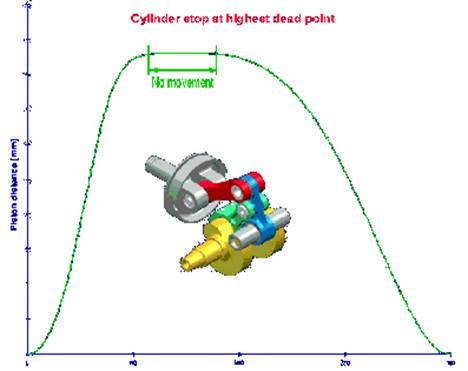





Published on Feb 14, 2025
Have you been to the gas station this week? Considering that we live in a very mobile society, it's probably safe to assume that you have. While pumping gas, you've undoubtedly noticed how much the price of gas has soared in recent years. Gasoline which has been the main source of fuel for the history of cars, is becoming more and more expensive and impractical (especially from an environmental standpoint).
These factors are leading car manufacturers to develop cars fueled by alternative energies. Two hybrid cars took to the road in 2000, and in three or four years fuel-cell-powered cars will roll onto the world's highways.
While gasoline prices in the United States have not yet reached their highest point ($2.66/gallon in 1980), they have climbed steeply in the past two years. In 1999, prices rose by 30 percent, and from December 1999 to October 2000, prices rose an additional 20 percent, according to the U.S. Bureau of Labor Statistics. In Europe, prices are even higher, costing more than $4 in countries like England and the Netherlands. But cost is not the only problem with using gasoline as our primary fuel. It is also damaging to the environment, and since it is not a renewable resource, it will eventually run out. One possible alternative is the air-powered car.
Air powered cars runs on compressed air instead of gasoline. This car is powered by a two cylinder compressed engine. This engine can run either on compressed air alone or act as an IC engine. Compressed air is stored in glass or fiber tanks at a pressure of 4351 psi.
Within the next two years, you could see the first air-powered vehicle motoring through your town. Most likely, it will be the e.Volution car that is being built by Zero Pollution Motors.
The cars have generated a lot of interest in recent years, and the Mexican government has already signed a deal to buy 40,000 e.Volutions to replace gasoline- and diesel-powered taxis in the heavily polluted Mexico City.
The following is the technology description of the actual functionality of the motor. A more detailed explanation can be found in U.S. patent no: 6,334,435
1. The first piston takes in ambient air and compresses it to approximately 300 psi and 200*f in the compression chamber during the first cycle of the engine.

2. When the piston pause, a small amount of compressed air from the tanks is released into the expansion chamber to create a low pressured, low temperature volume of about 140psi
3. Shortly before the valve to the exhaust cylinder is opened, a high-speed shutter connects the compression and expansion chambers. The sudden pressure and temperature difference between the low chambers creates pressure waves in the expansion chamber, thereby producing work in the exhaust chamber that drives the piston to power the engine.
The air tanks for storing the compressed air are localized underneath the vehicle. They are constructed of reinforced carbon fiber with a thermoplastic liner. Each tank can hold 3,180 ft3 of air at a pressure of up to 4,300 psi. When connected to a special compressor station, the tanks can be recharged within 3-4 minutes. They can also be recharged using the on-board compressor 3-4 hours after connecting to a standard power outlet.
These new vehicles incorporate various innovative and novel systems such as storing energy in the form of compressed air, using new materials such as fiberglass to build the car and vegetable oil for the motor lubrication.
Numerous innovations have been integrated in the engine design. As an example, there is a patented system of articulated conrods that allow the piston to pause at top dead center. The following graph indicates this movement of the piston in relation to the driving shaft rotation.

The car engine runs on compressed air and incorporates the three laws of thermodynamics.
1. The first law states that energy can neither be destroyed nor be wasted.
2. The second law describes the disorder within substances.
The third law defines that only in crystals at 0o k, there is absolute disorder
One of the most frequently asked questions is about the safety of the compressed air storage tanks. These tanks hold 90 cubic meters of air compressed to 300 bars. Many people ask whether this system is dangerous in case of an accident and if there is a risk of explosion. The answer is NO. Why? Because these are the same tanks used to carry the liquid gas used by buses for public transport. The tanks enjoy the same technology developed to contain natural gas. They are designed and officially approved to carry an explosive product: methane gas.
In the case of a major accident, where the tanks are ruptured, they would not explode since they are not metal. Instead they would crack, as they are made of carbon fiber. An elongated crack would appear in the tank, without exploding, and the air would simply escape, producing a loud but harmless noise. Of course, since this technology is licensed to transport an inflammable and explosive gas (Natural gas), it is perfectly capable inoffensive and non-flammable air.
It is fitting, therefore, that MDI has reached an agreement with the European leader in aerospace technology Airbus Industries for the manufacture of the compressed air storage tanks. With a remote supervision arrangement, Airbus Industries oversees the making of the storage tanks at each MDI factory. The coiled carbon fibre technology used in the construction of the tanks is complex and requires a substantial quality control process which the multinational company, home of the Airbus aircraft, will provide for our vehicles.
The MDI vehicles will be equipped with a range of modern systems. For example, one mechanism stops the engine when the car is stationary (at traffic lights, junctions etc). Another interesting feature is the pneumatic system which recovers about 13% of the power used.
The MDI car body is built with fibre and injected foam, as are most of the cars on the market today. This technology has two main advantages: cost and weight. Nowadays the use of sheet steel for car bodies is only because of cost - it is cheaper to serially produce sheet steel bodies than fibre ones. However, fibre is safer (it doesn’t cut like steel), is easier to repair (it is glued), doesn’t rust etc. MDI is currently looking into using hemp fibre to replace fibre-glass, and natural varnishes, to produce 100% non-contaminating bodywork.
The MDI engine works with both air taken from the atmosphere and air pre-compressed in tanks. Air is compressed by the on-board compressor or at service stations equipped with a high-pressure compressor.
Before compression, the air must be filtered to get rid of any impurities that could damage the engine. Carbon filters are used to eliminate dirt, dust, humidity and other particles, which unfortunately, are found in the air in our cities.
This represents a true revolution in automobiles - it is the first time that a car has produced minus pollution, i.e. it eliminates and reduces existing pollution rather than emitting dirt and harmful gases. The exhaust pipe on the MDI cars produces clean air, which is cold on exit (between -15º and 0º) and is harmless to human life. With this system the air that comes out of the car is cleaner than the air that went in.
Based on its experience in aeronautics, MDI has put together highly resistant, yet light, chasses, aluminium rods glued together. Using rods enables us to build a more shock-resistant chassis than regular chasses. Additionally, the rods are glued in the same way as aircraft, allowing quick assembly and a more secure join than with welding. This system helps to reduce manufacture time.
Guy Nègre, inventor of the MDI Air Car, acquired the patent for an interesting invention for installing electrics in a vehicle. Using a radio transmission system, each electrical component receives signals with a microcontroller. Thus only one cable is needed for the whole car. So, instead of wiring each component (headlights, dashboard lights, lights inside the car, etc), one cable connects all electrical parts in the car. The most obvious advantages are the ease of installation and repair and the removal of the approximately 22 kg of wires no longer necessary. Whats more, the entire system becomes an anti-theft alarm as soon as the key is removed from the car.
Air powered cars run on compressed air instead of gasoline. Since the car is working on air there is no pollution. A two cylinder, compressed air engine, powers the car. The engine can run either on compressed air alone or act as an internal combustion engine. Compressed air is stored in fiber or glass fiber tanks at a pressure of 4351 pounds per square inch. The air is fed through an air injector to the engine and flows into a small chamber, which expands the air. The air pushing down on the piston moves the crankshaft, which gives the vehicle power.
This car is also working on a hybrid version of their engine that can run on hybrid version of their engine that can run on traditional fuel in combination with air. The change of energy source is controlled electronically. When the car is moving at speeds below 60kph,it runs on air. At higher speeds, it runs on a fuel such as gasoline diesel or natural gas.
Air tanks fixed to the underside of the vehicle can hold about 79 gallons (300 litres) of air. This compressed air can fuel the car upto 200km at a top speed of 96.5kph.When the tank nears empty it can be refilled at the nearest air pump. The car motors require a small amount of oil about 0.8 litres worth that have to change just every 50,000km.
| Are you interested in this topic.Then mail to us immediately to get the full report.
email :- contactv2@gmail.com |